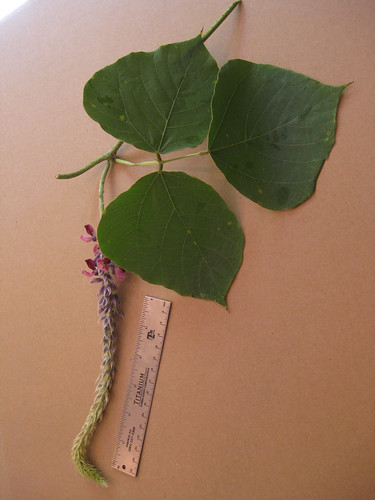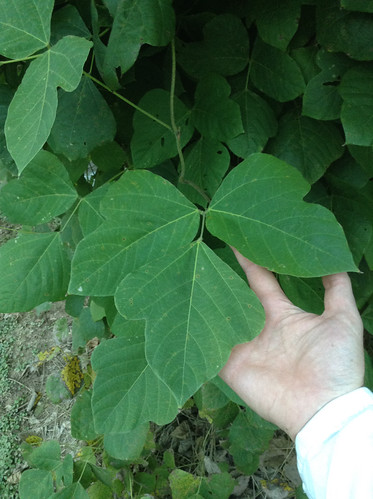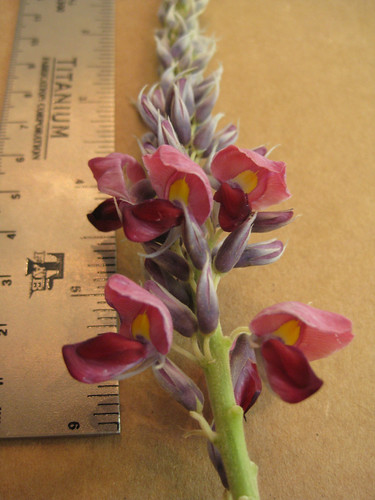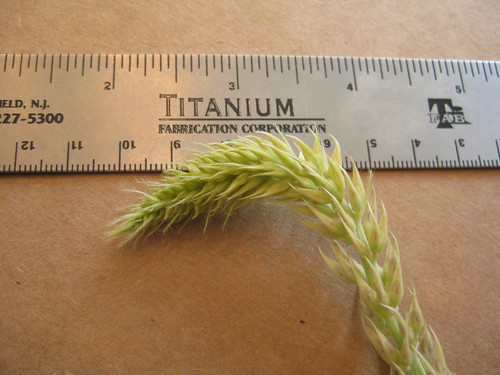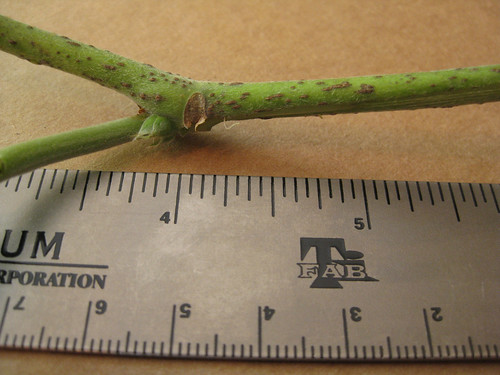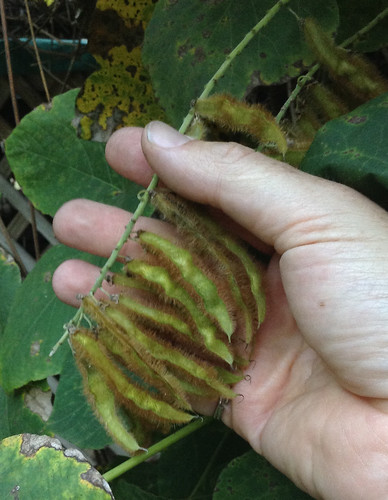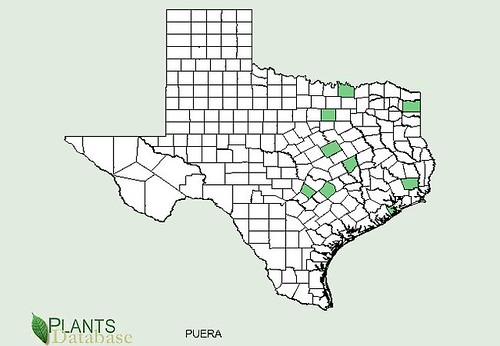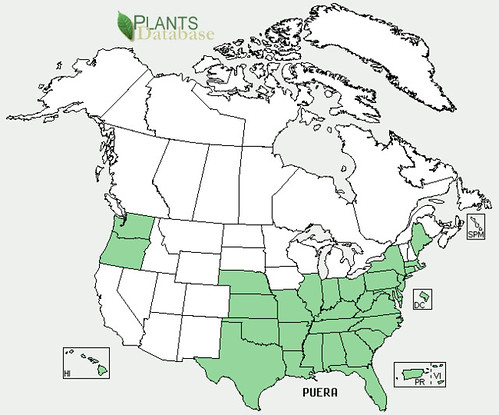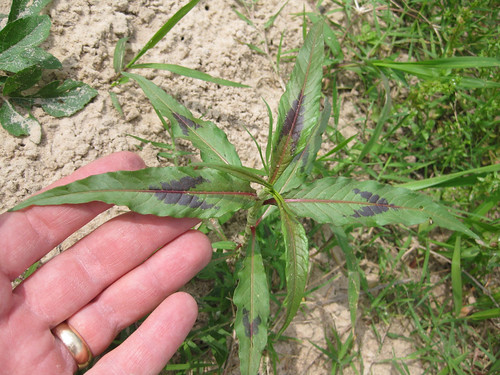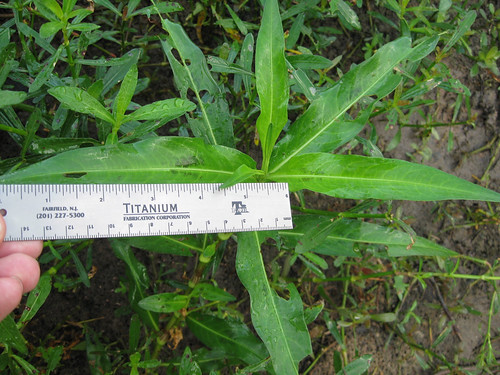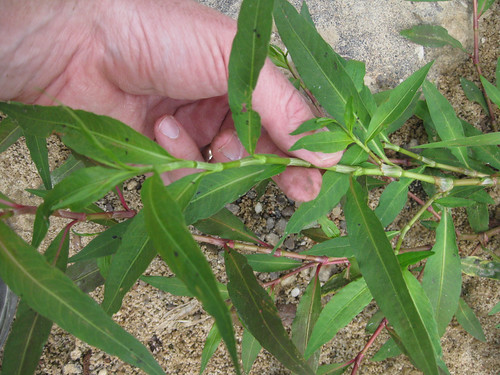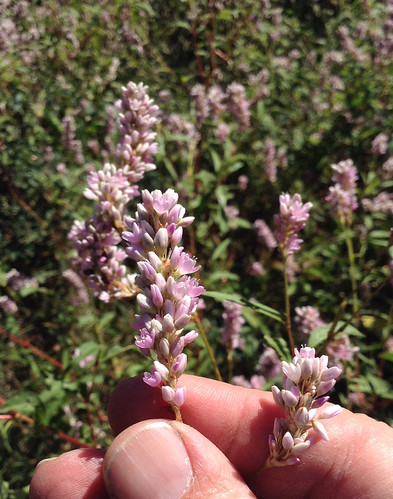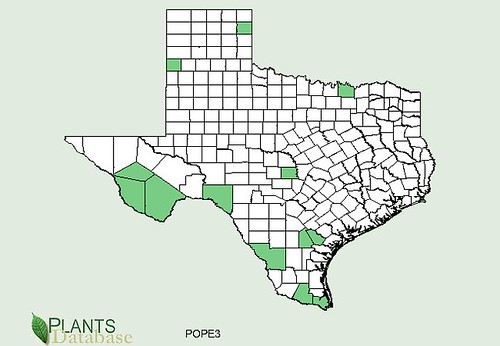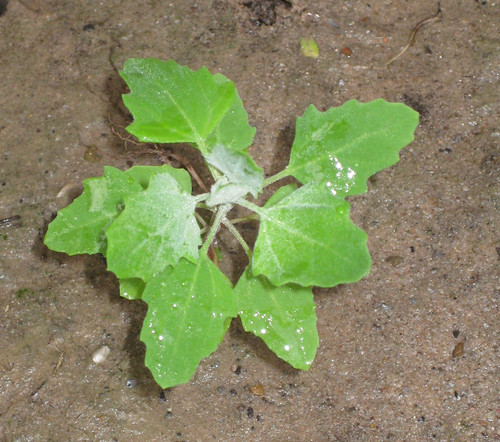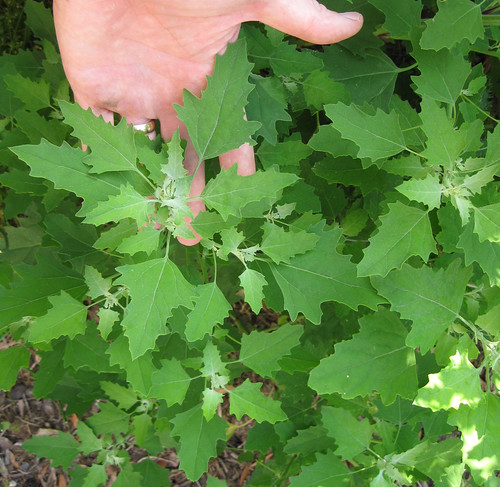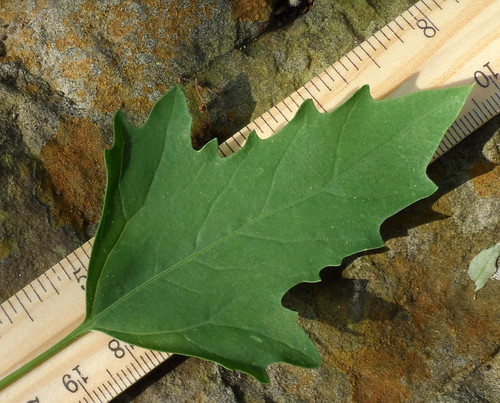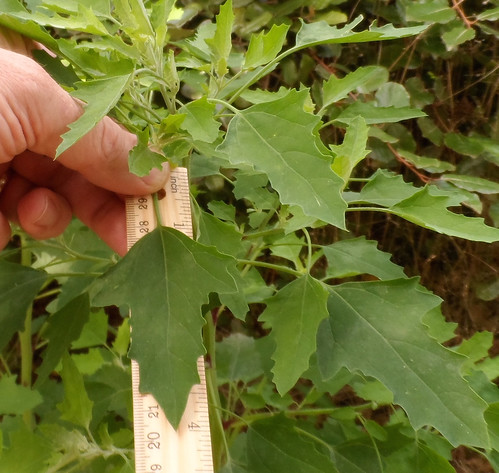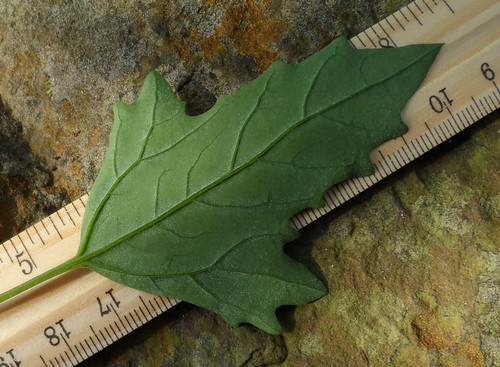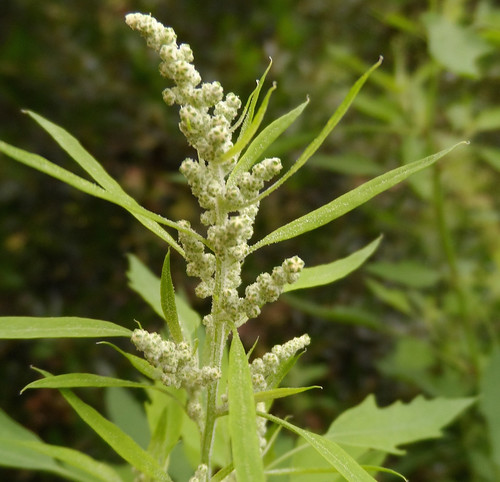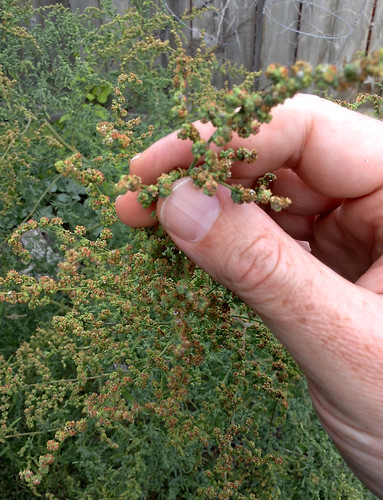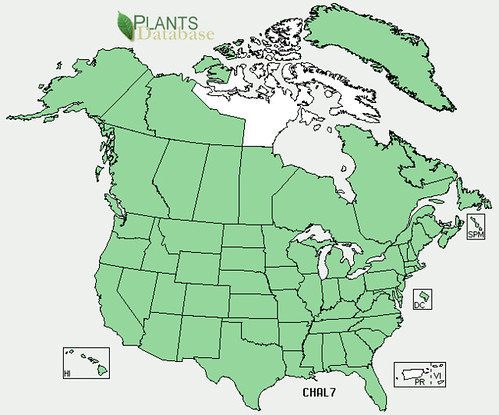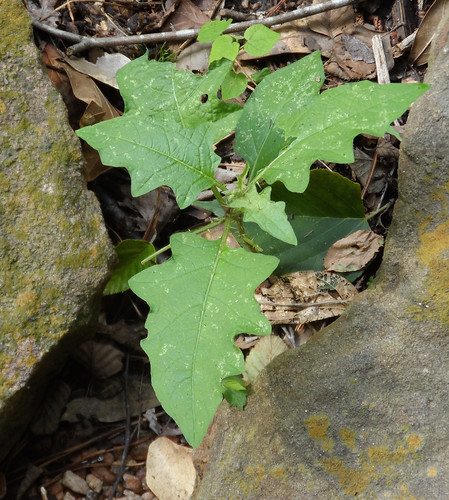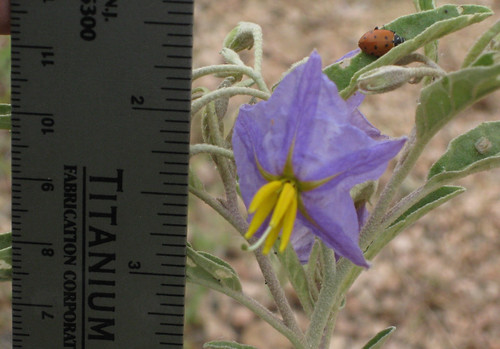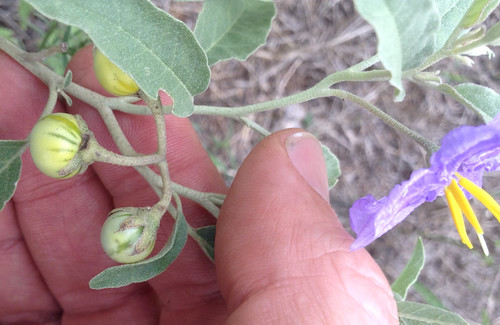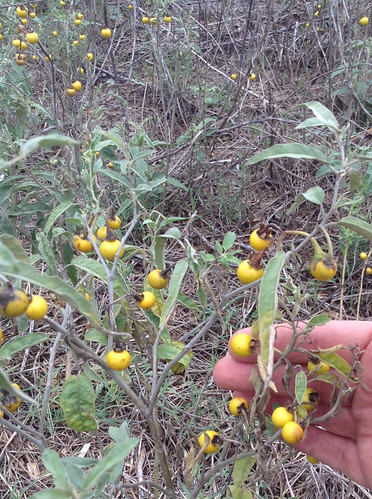Abundance: rare
What: tubers
How: raw, cooked
Where: fields, wastelands
When: winter
Nutritional Value: carbohydrates, minerals
Dangers: may cause gas/flatulance
Jerusalem artichoke plants in their preferred habitat, the sanding banks of a river.
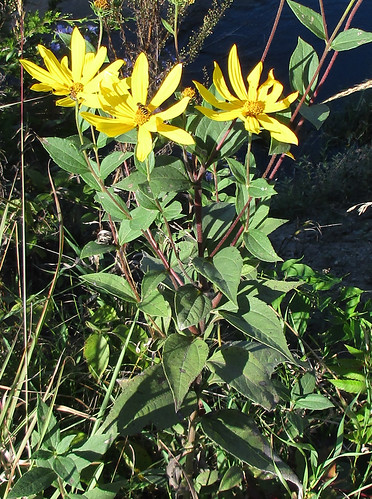
Tubers


A single, large tuber.
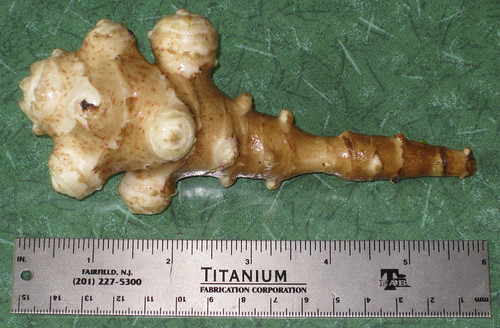
Plant.

Close-up of Jerusalem artichoke leaves
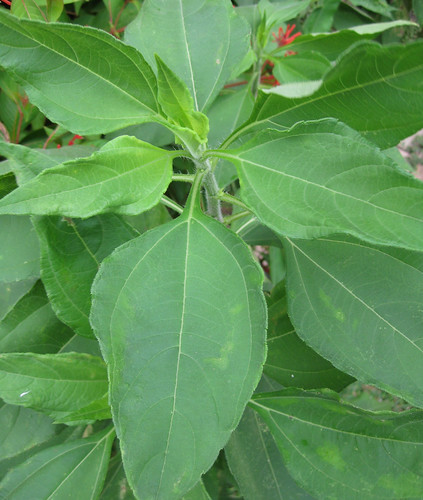
Young flower buds before opening.
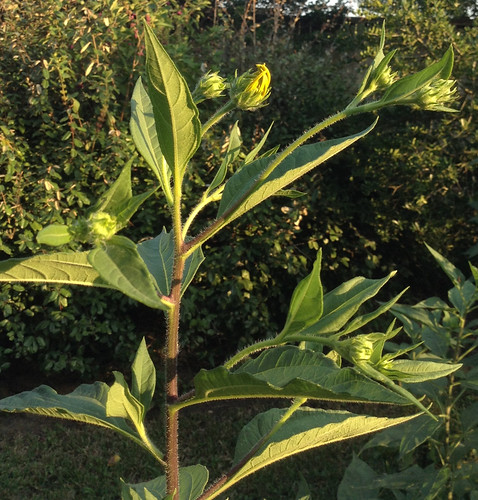
Jerusalem artichoke flowers.

Wild sunflower flower on left, Jerusalem artichoke flower on right.
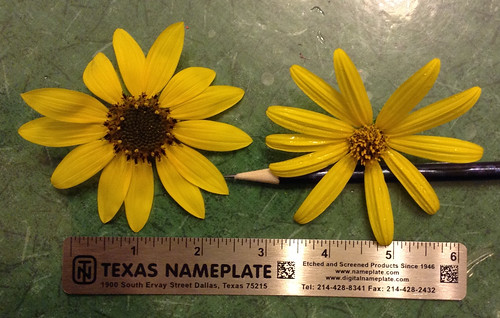
Texas distribution, attributed to U. S. Department of Agriculture. The marked counties are guidelines only. Plants may appear in other counties, especially if used in landscaping.
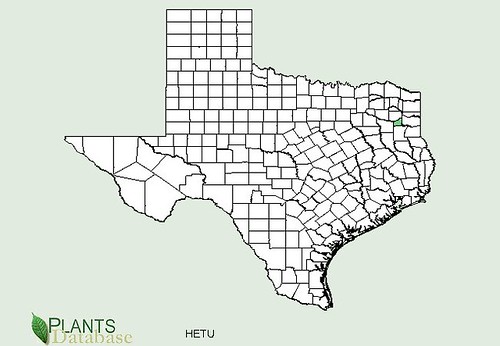
North American distribution, attributed to U. S. Department of Agriculture.
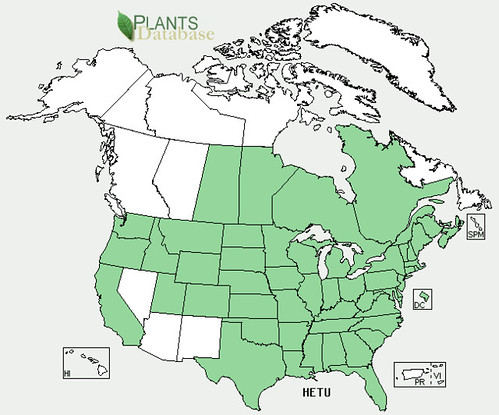
Jerusalem artichokes thrive in neglected waste areas and produce a large amount of starchy tubers. This makes them an excellent plant for guerrilla gardening in vacant lots and other urban-blighted areas. They belong to the same family as sunflowers and produce similar flowers in the late summer/fall.
As the tuber grow during the summer they are filled with a large starch molecule called inulin. Inulin tastes sweet but is a very complex carbohydrate which the human digestive system can not break down to extract any usable calories. Tubers eaten in the summer or fall will give you some minerals, a few vitamins, and some fiber but the inulin starch will just pass through the digestive track. Sidenote: some bacteria in the gut can eat this inulin and after doing so this bacteria will produce quite a bit of methane gas...which may lead to excessive flatulence.
However, after the first frost of the year the tuber starts producing a slow-acting enzyme which breaks the inulin down into simple sugars that the plant will use to grow new stalks in the spring. We can digest/metabolize these simple sugars. This means if we have to wait until late winter to harvest the tuber to get calories from them.
If possible leave the tubers in the ground during winter and just dig them up as need. This works great in Houston or other southern climates. Tubers stored in a refrigerator tend to get mushy for some reason. If you are up north store the tubers outside in a covered wooden box filled with loose, dry sand.
Jerusalem artichoke tubers were a staple food of many Native American tribes and were spread throughout North America via trade between tribes. However, they were not actively cultivated like corn, squash, beans or other well-known native crops. The tubers were buried and then the plants were usually just ignored until late winter when the natives were running low on stored food. At this time the women would go searching for field mouse homes to raid for Jerusalem artichoke tubers. The mice loved the tubers and would spend a great deal of time digging them up and stockpiling them around their nest. The women would then just steal them from the mice.
These plants are somewhat rare in the wild so if you do find them it is best just to buy 5-10 tubers from some fancy grocery store and plant them somewhere on your own property. They will then rapidly form your own stand of Jerusalem artichokes and within two years you'll have all the tubers you could want.
Buy my book! Outdoor Adventure Guides Foraging covers 70 of North America's tastiest and easy to find wild edibles shown with the same big pictures as here on the Foraging Texas website.



